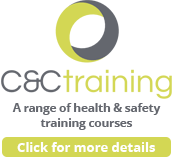Health & Safety In The Workplace
What is Health and Safety in the Workplace?
Health and Safety in the workplace refer to the efforts and measures a business or organisation takes to ensure the physical and mental well-being of its employees and visitors to the work environment.
Health and Safety will take into account various practices, regulations and policies, aimed not only at preventing accidents, injuries and illnesses, but also promoting a culture of health and safety throughout.
Who is responsible for Health and Safety at work?
In law, under The Health & Safety At Work Act 1974, it is mostly the employer’s responsibility to ensure the health and safety of employees and ‘other people’ such as visitors or customers, within the workplace.
The key responsibilities of the employer, according to the Health and Safety At Work Act 1974, are –
- To provide a safe place to work, including safe systems of work – Making sure emergency procedures are in place, machinery is in safe working order, and employees know how to carry out their work in the safest possible way.
- To carry out risk assessments – To identify and evaluate workplace hazards, and determine the risks they pose to employees.
- To provide information and training – Ensuring employees have all the relevant training and health and safety advice, regarding hazard awareness, safe working practices, and emergency procedures.
- To regularly consult with employees – To ensure employees are aware of, and kept up to date with relevant health and safety issues, changes to regulation etc.
- To provide a Health and Safety policy – To ensure clear guidance is given to employees regarding health and safety, and to remain compliant with the Health and Safety At Work Act 1974.
It’s also important to remember, under the Health and Safety At Work Act 1974, employees also have a legal duty to adhere to the measures set out in the health and safety policy, to ensure their safety, and the safety of others.
Employees’ responsibilities/duties include –
- To take care of themselves, and others who might be affected by their actions
- To cooperate with employers on matters around H & S Support
- Attend Health and Safety training
- Follow Health and Safety guidance from the employer
- Not misuse equipment
- Report hazards as soon as possible, using the appropriate channels
The Main Goal of Health and Safety
Health and Safety in the workplace is always evolving, with its main goal remaining constant – to eliminate or remove workplace hazards and risks, that could potentially cause harm to employees, or workplace visitors.
To attain this health and safety goal, businesses need to carry out regular Risk Assessments and produce comprehensive Method Statements.
-
What Are Risk Assessments?
Risk assessments are the process of identifying potential hazards, and assessing the likelihood and severity of those hazards, to allow employers to prioritise risks and implement appropriate measures to reduce or eliminate them.
-
What Are Method Statements?
Method statements are another essential process to ensure safety for employees and visitors in the modern workplace. But, unlike risk assessments, method statements outline the steps to be taken to carry out tasks safely.
Why Does your Workplace Need HSE Risk Assessments and Method Statements?
Below, we’ve listed five key reasons why HSE risk assessments and method statements are essential.
If you’d like further help in carrying out your risk assessment or producing a method statement, get in touch now to book your free consultation with us.
-
Legal Requirements
In the UK, employers are legally required to conduct risk assessments and prepare method statements as a matter of course. Failure to comply with regulations and laws including RIDDOR, can result in heavy fines and legal action.
By conducting regular risk assessments, and preparing method statements, you can demonstrate that your business is taking the relevant steps to provide a safe working environment for your employees, and visitors.
-
Prevention of Accidents and Injuries
The primary goal of risk assessments and method statements is to prevent minor and major accidents and injuries occurring in the workplace. By carrying out thorough risk assessments and preparing method statements, you not only help protect employees and site visitors from harm, but you also help to reduce costs. Costs may include compensation claims associated with accidents at work.
-
Improved Efficiency
By preparing a comprehensive method statement, you outline the proper steps to be taken to carry out a specific task in the safest manner possible, which should also be the most efficient without the risk of causing an injury.
In many cases, using method statements improves overall efficiency and productivity, and because fewer accidents happen, you also get to reduce the downtime required to deal with each occurrence.
-
Better communication and reinforced culture of safety
Risk assessments and method statements provide an ideal platform to improve (and highlight the importance of) communication between employers and employees regarding workplace hazards and risks. Regular training on safety procedures also helps reinforce a safety culture. As a result, employees and employers become more aware of the hazards and risks within the workplace and can avoid them.
-
Improved Reputation
By carrying out regular risk assessments, or preparing workplace method statements, safety for employees and visitors in your workplace will naturally improve, therefore improving your reputation as a business.
A good reputation for safety also helps businesses retain and attract talented employees and can help to increase trust and loyalty within the wider community and with potential and returning customers.
Get your FREE Consultation










